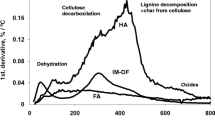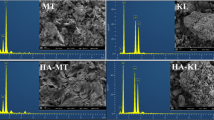Abstract
The sorption of L-methionine-sulphoximine (MSX) on soil-extracted humic fractions (MW>20,000 Da), and mined clays (kaolinite and montmorillonite) was studied by a reversed-phase high-performance liquid chromatography method. The molecule, acting as an inhibitor of glutamine synthetase activity, was recently used in soil incubation assays for the determination of gross rates of N mineralization. Equilibrium data of MSX adsorbed on humic fractions and clay minerals were described by both the Freundlich and Langmuir sorption isotherms. It was observed that humic fractions were more effective than mined clay minerals in removing MSX from water. Most isotherms were of Langmuir type, indicating a higher affinity of MSX for sorbing sites which become increasingly saturated at higher equilibrium concentrations. Analysis of Langmuir empirical constants revealed that different adsorbing mechanisms took place. Results showed that when MSX is applied in soil incubation assays, sorption of MSX on soil colloids considerably reduces the availability of the inhibitor to target microorganisms, and renders the method unsuitable for the determination of the gross rate of N mineralization, especially when high levels of both organic matter and clay minerals are present in the soil.
Similar content being viewed by others
Author information
Authors and Affiliations
Additional information
Received: 19 April 1999
Rights and permissions
About this article
Cite this article
Gelsomino, A., Cacco, G. & Nannipieri, P. Sorption of L-methionine-sulphoximine on humic acids and clay minerals. Biol Fertil Soils 31, 356–359 (2000). https://doi.org/10.1007/s003740050668
Issue Date:
DOI: https://doi.org/10.1007/s003740050668




